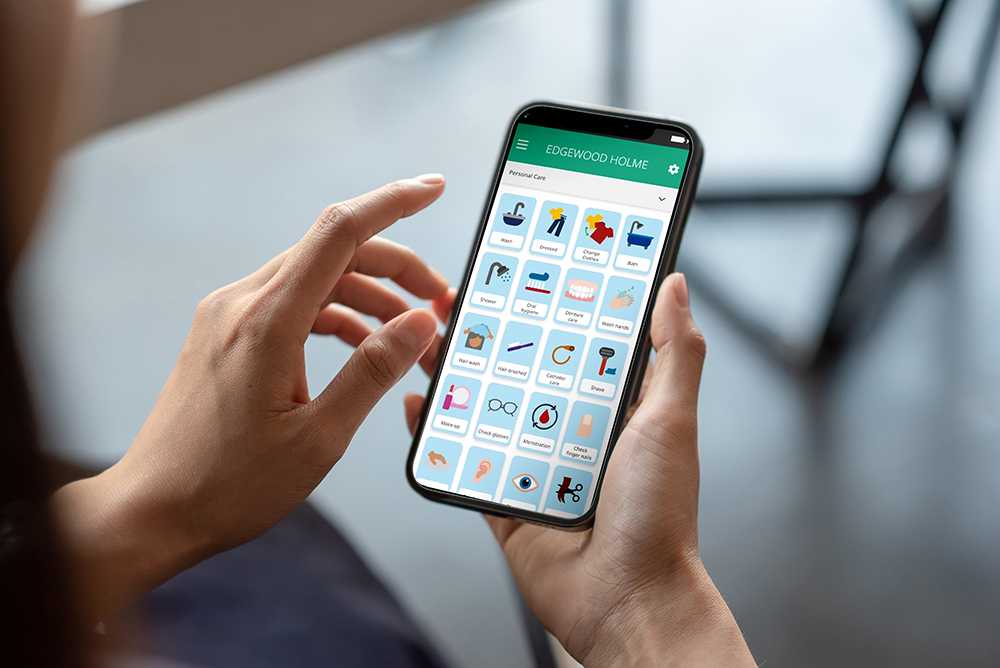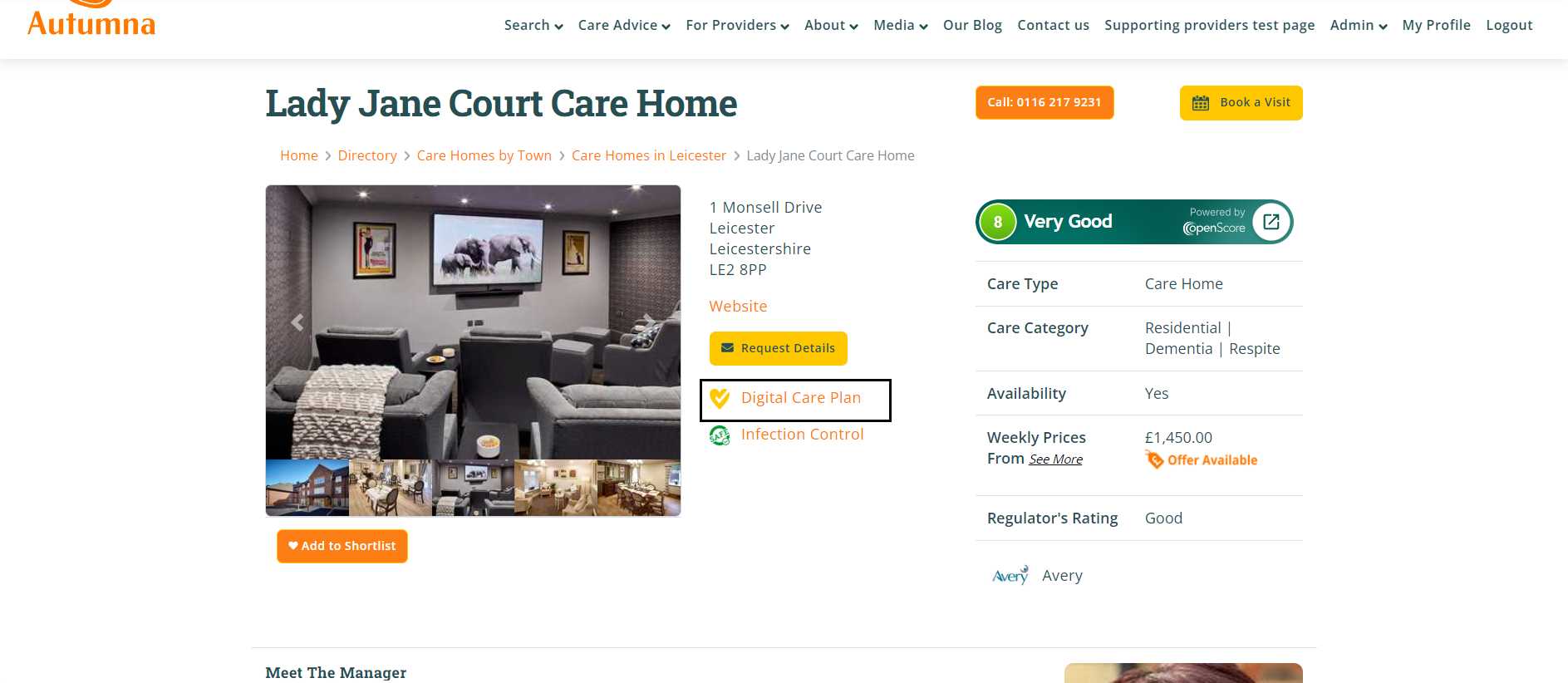Posted by Janine Griffiths
Ultimate Guide to Digital Care Planning

In today’s fast-paced world, technology is transforming nearly every aspect of our lives, and the field of elderly care is no exception.
Digital care planning is at the forefront of this transformation, offering innovative solutions to enhance the way we manage and deliver health and social care services.
But what exactly is digital care planning, and why is it becoming such a crucial component of modern care systems?
In this ultimate guide, we will explore the key features and benefits of digital care planning, examine how it enhances care provision and discuss the challenges and considerations involved.
What is digital care planning?
Digital care planning involves the use of technology to create, manage, and update care plans for individuals.
Unlike traditional methods that often rely on paper records and manual updates, digital care planning leverages software tools to centralise information, update details in real-time, and streamline communication.
This means that not only can an individual’s records be stored securely online but that providers will be able to access a complete, updated record of a person’s background that allows them to deliver the best care, tailored to a person’s unique needs and preferences.
Key features of digital care planning tools
Digital care planning tools offer a range of powerful features that revolutionise the way care is managed. Here are some of the most essential features of digital care plans:
Centralised data management
One of the most significant advantages of digital care planning tools is the ability to store all essential information in one centralised platform. Care providers can easily access individual care plans, medical records, and relevant notes, ensuring that everyone involved in a person's care is always on the same page. This seamless flow of information reduces errors, improves communication, and enhances the continuity of care.
Real-time updates and communication
With digital care planning, updates can be made in real-time, ensuring that all team members are immediately informed of any changes to a patient’s plan. This feature is particularly important for individuals with complex or rapidly changing needs, allowing for quick adjustments and timely interventions. Additionally, instant messaging and communication functions built into the platform make it easier for caregiving teams to collaborate effectively.
Personalised care plans
Digital tools enable care providers to tailor plans specifically to each individual’s unique needs, preferences, and health conditions. This flexibility allows for more personalised and responsive care, adapting to the changing needs of the individual over time. The ability to track progress, goals, and outcomes also helps ensure that care is always aligned with the patient’s best interests.
Compliance with regulations and best practices
Staying compliant with regulations is a critical aspect of delivering care, especially in the UK where there are strict guidelines and regulations. Digital care planning tools help organisations stay compliant by automating documentation, generating reports, and providing audit trails. This not only helps meet regulatory requirements but also provides peace of mind for care providers and families alike.
Data security and privacy
Digital care platforms prioritise data security, often incorporating encryption and strict access controls to protect sensitive personal information. With stringent regulations such as GDPR in place, these tools ensure that patient data is handled securely and in full compliance with legal requirements, safeguarding both the provider and the individual.
Analytics and reporting
One of the more innovative features of digital care planning is the ability to generate detailed reports and analytics. By tracking patterns, outcomes, and trends in care delivery, these tools can offer valuable insights that inform decision-making and improve quality over time. Analytics can also be used to monitor staff performance, identify inefficiencies, and highlight areas for improvement.
Benefits of digital care planning
As the world of elderly care evolves, digital care planning is proving to be a game-changer. By transitioning from traditional paper-based methods to modern, tech-driven solutions, care providers can significantly improve both the quality and efficiency of their services.
Electronic records not only streamlines day-to-day tasks but also offers a host of advantages that enhance communication, personalisation, and compliance. In this section, we’ll explore the key benefits of adopting digital care planning, and how it can transform the caregiving experience for professionals, families, and the individuals in their care.
Improved efficiency
By replacing manual, paper-based systems with digital platforms, administrative tasks such as updating care records, managing schedules, and sharing information become quicker and more streamlined. This not only reduces the time staff spend on paperwork but also allows them to focus more on providing hands-on care. Automation features, like reminders for medication or appointments, further enhance efficiency, ensuring that nothing falls through the cracks.
Enhanced communication
Digital care planning tools facilitate seamless communication between all parties involved in a person’s care. Whether it’s care teams coordinating across shifts, families staying informed about their loved one’s well-being, or medical professionals accessing real-time updates, these platforms bridge the gaps in communication. This enhanced coordination helps to prevent miscommunication, improve care consistency, and ensure that everyone has access to the latest information regarding a patient’s care needs and progress.
Data-driven insights
One of the most powerful aspects of digital care planning is the ability to harness data for better decision-making. By collecting and analysing data on everything from care outcomes to staff performance, digital tools provide valuable insights that can drive improvements in care quality. Reports and analytics allow care managers to identify trends, spot inefficiencies, and make informed adjustments to care plans. This data-driven approach ensures that care is always evolving to meet the individual’s needs more effectively.
Safety and security
Digital care platforms are designed with robust security measures to protect sensitive personal information. With the rise of data privacy regulations like GDPR in the UK, ensuring the safety and confidentiality of care records is paramount. Digital care tools use encryption, secure logins, and restricted access to safeguard data, ensuring that only authorised individuals can view or modify care plans. This not only helps maintain compliance with legal standards but also builds trust with families and care recipients, knowing their information is in safe hands.
To learn more about care plans in general and understand how often they should be re-evaluated, check out our blog, ‘How often should a care plan be reviewed?’
How digital care plans are used by care providers
The best care providers tailor their services to each individual resident to ensure they receive the best possible support. Digital care planning makes it much easier for providers to do this because it means that they have all of the information about an individual within one database. For care managers, these electronic records can make it easier for them to gain valuable insights across their facility or database. This helps them to improve their overall services or identify any gaps or challenges that could potentially have an impact on the wellbeing or lifestyle of the individuals within their care.
A digital plan enables staff to access and update information in real-time, while efficiently delegating tasks, ensuring faster responses to resident needs.
Challenges associated with digital care plans
However, digital care plans also come with a number of inherent challenges, which we discuss below. These include:
Technology adoption in elder care
The adoption of electronic care plans can face resistance. Some staff may be hesitant to embrace new technology, particularly if they’re used to traditional methods. This reluctance often stems from concerns about learning a new system or fear of making mistakes. Additionally, a lack of proper training can further hinder smooth implementation. To overcome these barriers, care homes must invest in comprehensive training and provide ongoing support to ensure staff feel confident and competent using digital tools.
Costs and budgeting
Transitioning to digital records involves upfront costs, including software purchases, equipment upgrades, and staff training. For many care homes, especially smaller ones with limited budgets, these initial expenses can be a significant barrier. However, if it is viewed as an investment, it can potentially lead to long-term savings through improved efficiency, reduced paperwork, and better care management. Care providers should carefully assess their financial resources and explore options like phased implementations or grants to offset the costs.
Ensuring accessibility
For digital care planning tools to be effective, they must be user-friendly for both care providers and families. Complex, difficult-to-navigate platforms can create frustration and slow adoption. The design of these tools should prioritise simplicity, with intuitive interfaces that accommodate varying levels of tech-savviness. Additionally, ensuring that family members can easily access and understand care plans is crucial for promoting transparency and collaboration in the caregiving process.
Privacy concerns
While digital care planning offers many benefits, privacy remains a significant concern for care providers and families. The shift from paper-based records to digital platforms raises questions about the security of sensitive personal and medical information. With data being stored and shared electronically, there is an increased risk of unauthorised access, breaches, or cyberattacks. If you have any concerns about the way your data is being managed in a care home, then you can ask the care home about their policies of data protection and the training of staff.
The future of digital care planning
At the heart of digital care planning is the commitment to providing truly personalised care. With real-time updates and data-driven insights, care teams can continuously adapt to residents' changing needs, offering a tailored approach that paper records simply can’t match. For care seekers, this means greater confidence in the level of attention, responsiveness, and care quality their loved ones will receive. While there are some challenges involved in the adoption of digital care planning, such as costs and staff adaptation, the long-term benefits of these electronic records could potentially transform and improve the way care is delivered.
For those seeking care solutions, digital care plans provide an essential layer of communication and reassurance in the caregiving process. Therefore, choosing a provider that carefully embraces these innovations means selecting a future-proof solution that prioritises personalised care, safety, and transparency.
Looking for a care provider that supports digital care plans or family portals?
Our directory makes it easy to find care providers across the UK that use digital care plans to offer tailored, person-centred care. Simply select the type of care provider you want and enter your location to see a list of facilities. You can also look for the Digital Care Plan symbol on the provider folders. It looks a little bit like a yellow heart with a tick through it. You can usually find this under the ‘Request Details’ button next to the main profile picture.

If you cannot see it, this indicates that a provider may not be supporting digital care plans at this time.
You can also use our FREE shortlisting tool that can send you a list of suitable homes within minutes.
If you need additional assistance and information, you can contact our advice line on 01892 335 330.
Receive a Free Care Provider Shortlist!
Let our expert team of advisers get your search off to a great start.
Tell us a little about your needs and we'll send you a bespoke shortlist of care providers! Click the button below to begin, it takes just a few minutes.
Other articles to read
From the blog

Older Persons Care Advice
How to talk to your parents about care options
October 2nd, 2025
Learn how to talk to your parents about care options with compassion. Explore choices together and plan for the future with dignity and respect.

Older Persons Care Advice
Guide to empowering and promoting independence in older age
September 30th, 2025
Read our practical guidance for families on empowering and promoting independence in older age, helping loved ones stay confident and in control.

Older Persons Care Advice
Ultimate guide to jointly owned property and care home fees
September 26th, 2025
Understand jointly owned property and care home fees, how assessments work, and steps to protect your finances and plan ahead with confidence.
Frequently Asked Questions
Digital care plans offer several benefits to care seekers by enhancing the quality and transparency of care. Firstly, they provide real-time updates and easy access to comprehensive care records. This allows care providers to improve their responses to the needs of a care seeker and personalise their services based upon the information contained within. Digital care planning can also ensure that everyone involved in the care process is on the same page. Overall, digital care plans help care seekers by ensuring that their loved ones receive timely, well-coordinated, and tailored care.
Yes, many digital care platforms are cloud-based, allowing authorised care providers and family members to access information remotely. This ensures timely updates and allows families to stay informed, even from a distance.
In emergencies, digital care plans can provide instant access to a resident’s medical history, allergies, and medication details, allowing care teams to respond quickly and accurately without wasting time searching for paper records.
Yes, digital care plans are highly flexible and can be customised to meet a wide variety of care needs, from short-term rehabilitation to long-term chronic care, ensuring that plans evolve as a resident's condition changes.






